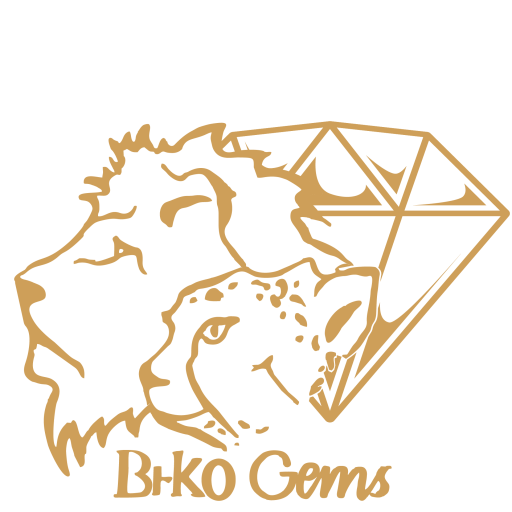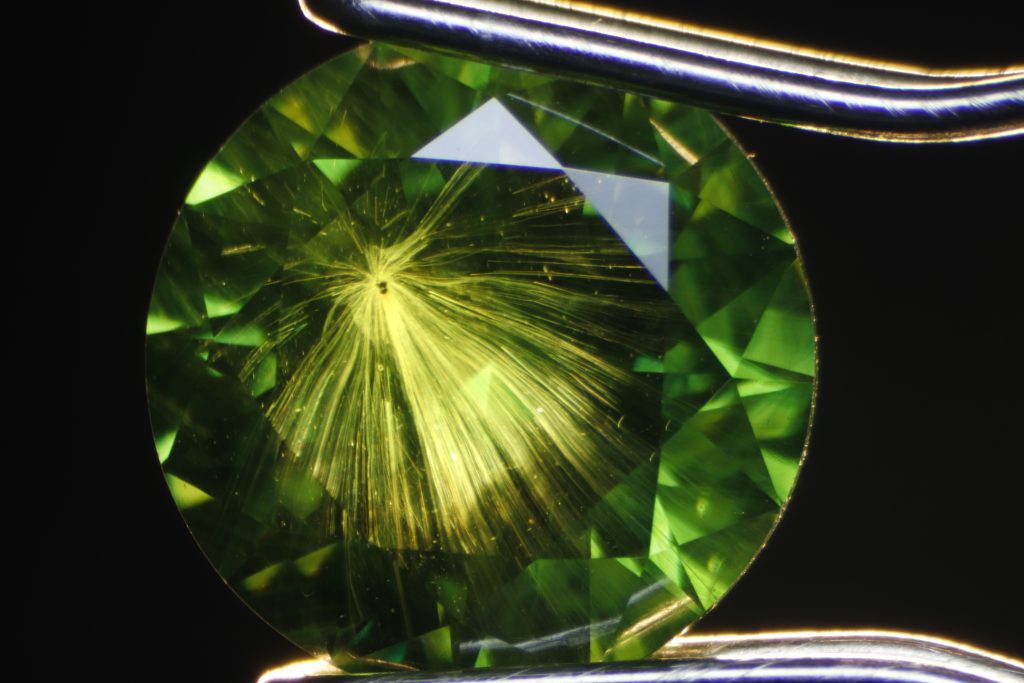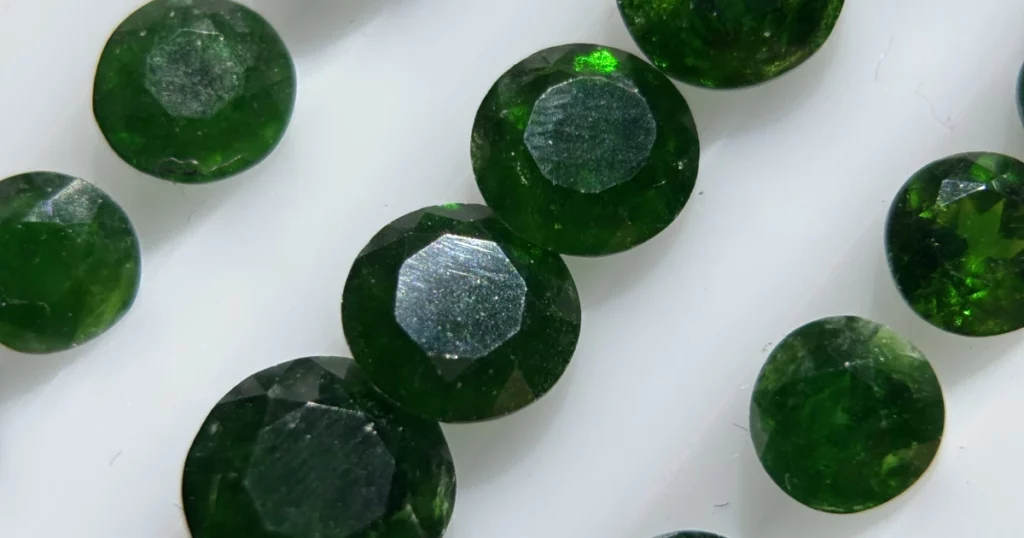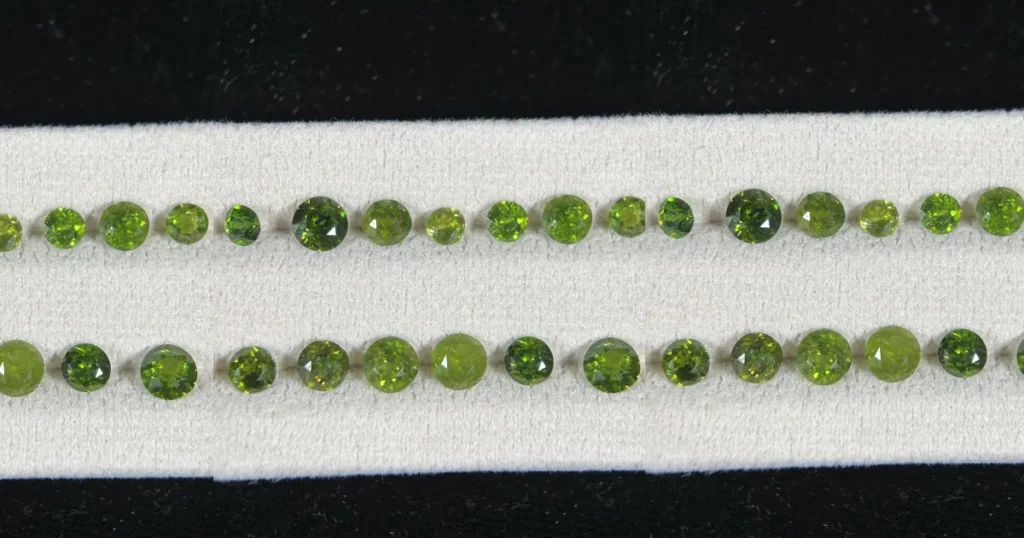Demantoid garnet, one of the most exquisite varieties of garnet, is a gemstone that seamlessly blends rarity with exceptional brilliance. With its fascinating history, vibrant hues, and unique inclusions, demantoid garnet has carved a special place in the world of precious stones.
The Origins and Description of Demantoid Garnet
The discovery of demantoid garnet, a valuable green variety of andradite garnet (Ca₃Fe₂(SiO₄)₃), dates back to the mid-19th century (around the 1850s) within the alluvial and placer deposits of the Ural Mountains in Russia. This gemstone rapidly gained international acclaim due to its stunning emerald-green color – primarily caused by trace amounts of chromium (Cr³⁺) and sometimes ferric iron (Fe³⁺) – and its exceptional dispersion, which results in remarkable “fire”. Its name is derived from the old German/Dutch word ‘Demant’ (meaning diamond), reflecting its remarkable brilliance and dispersion (with a dispersion index of 0.057), which is significantly high and notably surpasses even that of diamond (0.044), making this a key identifying and appealing characteristic.
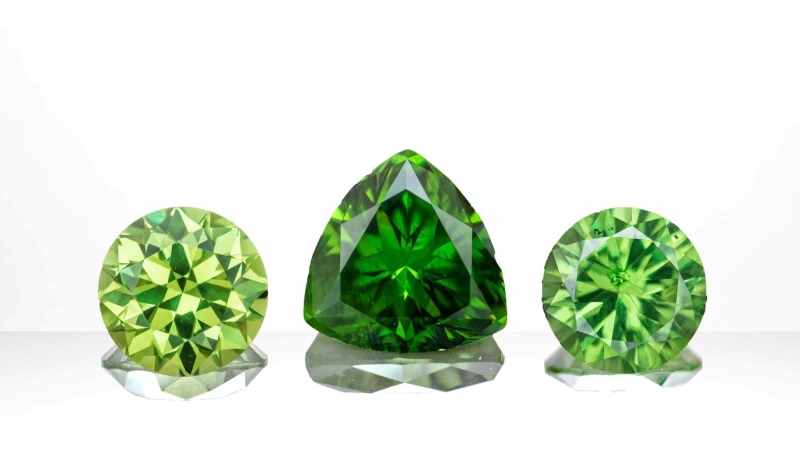
One of the classic and highly prized features, particularly in high-quality Russian demantoids, is the presence of distinctive fibrous, radiating inclusions known as “horsetails.” These inclusions are typically bundles of fine fibers of chrysotile (a serpentine mineral) or byssolite (an amphibole variety). Their presence, especially in a well-formed pattern, can often indicate Russian origin and enhance the stone’s value.
While Russia (specifically the Ural region) remains the classic and primary source, setting the standard for quality, demantoid garnet is now also mined in other deposits worldwide, including Namibia, Madagascar, Iran (notably the Baft area, Kerman province), and Italy (near the Val Malenco asbestos mine). Demantoids from each locality can exhibit subtle differences in hue, saturation, and the type and prevalence of inclusions.
For instance, some Namibian demantoids may show a stronger yellowish or brownish secondary hue, and the characteristic horsetail inclusions are less common or absent in non-Russian specimens. This diversity, combined with its relative rarity and unique beauty, makes demantoid a highly desirable gem for discerning gemologists, knowledgeable collectors, and creative jewelry designers.
Also, if you are interested in sapphire and plan to buy it, you can visit the sapphire buying page.

The Scientific and Gemological Profile of Demantoid Garnet
Scientifically, demantoid garnet is classified as the andradite species, a member of the diverse Garnet group. It is fundamentally a calcium-iron silicate, defined by the chemical formula Ca₃Fe₂(SiO₄)₃.
Its renowned green coloration primarily stems from trace amounts of chromium (Cr³⁺) substituting for some of the iron (Fe³⁺) within the garnet’s crystal lattice structure, specifically in the Y-site; iron content also influences any secondary yellowish or brownish hues. Demantoid crystallizes in the cubic (or isometric) system, which denotes a crystal structure with uniform atomic arrangement along all three spatial axes.
In terms of its physical characteristics, demantoid garnet registers a hardness of 6.5 to 7 on the Mohs scale. While this provides reasonable durability, it suggests that demantoid jewelry, especially rings intended for daily wear, should be handled with some care to minimize the risk of scratches and abrasion. The gem possesses a relatively high Specific Gravity (SG) ranging from 3.80 to 3.87 (typically around 3.84), which is a useful diagnostic property.
Its luster is notably strong, ranging from adamantine (diamond-like) to subadamantine or resinous, significantly contributing to its visual appeal. Like other garnets, demantoid exhibits no cleavage planes and typically fractures in a conchoidal (shell-like) to uneven manner.
Also, if you plan to buy Jewellery, you can visit the Jewellery page.
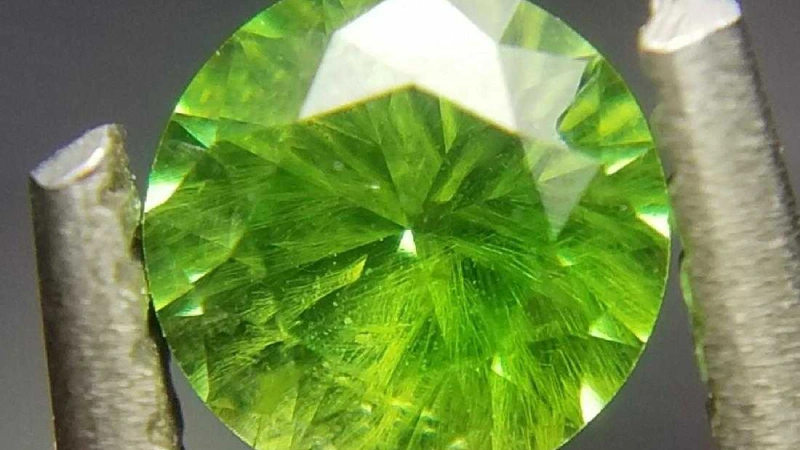
Optically, demantoid is isotropic, meaning it is singly refractive. Light passes through it at a single velocity without being split into two rays, hence it does not display birefringence.
Its Refractive Index (RI) is very high, ranging from 1.880 to 1.889 (often near the upper end of this range), which is a key factor behind its exceptional brilliance. Furthermore, demantoid’s most celebrated optical feature is its remarkably high dispersion, measured at 0.057. This value significantly exceeds that of diamond (0.044) and is responsible for the gem’s pronounced “fire” – the flashing display of spectral colors – which originally inspired its “diamond-like” name.
Regarding color, demantoid garnets are found in a spectrum ranging from a light yellow-green to a highly prized, rich, deep emerald green. As mentioned, the interplay between chromium (Cr³⁺) promoting greenness and iron (Fe³⁺) introducing yellow or brown modifiers determines the final perceived color.
The most valuable and sought-after demantoids display a pure, vivid, saturated green hue with minimal secondary tones. Occasionally, phenomena such as color zoning, manifesting as uneven color distribution within the crystal, can also be observed in demantoid specimens.
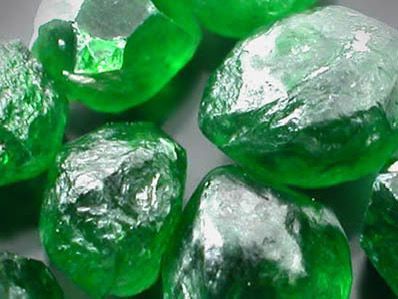
What Sets Demantoid Garnet Apart?
Demantoid garnet holds a distinguished position among colored gemstones due to a combination of rare characteristics that make it highly appealing to connoisseurs and enthusiasts alike:
1. Iconic “Horsetail” Inclusions: Perhaps the most diagnostic feature of demantoid, particularly in high-quality specimens from Russia’s Ural Mountains, is the presence of characteristic “horsetail” inclusions. These typically consist of wavy, radiating bundles of fine, often golden-greenish fibers emanating from a small central point (often a tiny chromite crystal). These fibers are primarily composed of chrysotile (a fibrous serpentine) or sometimes byssolite (an amphibole variety). The presence of these inclusions, especially in a distinct and aesthetically pleasing pattern, is not only considered a strong indicator of Russian origin (often the most valuable type) but also acts as a natural signature that significantly enhances the gem’s character, collectibility, and value. These inclusions are almost unique to demantoid.
2. Exceptional Brilliance and Fire: Owing to its very high Refractive Index (RI) of 1.880-1.889 and extraordinary Dispersion (0.057) – which notably exceeds that of diamond – demantoid exhibits stunning brilliance and a captivating display of spectral colors known as “fire.” These optical properties cause even small demantoid gems to appear incredibly lively, bright, and scintillating, breaking down and reflecting light dramatically. This quality distinguishes it from most other green gemstones and makes it ideal for showcasing in intricate jewelry designs.
Also read : Agate Healing Properties: A Comprehensive Guide!
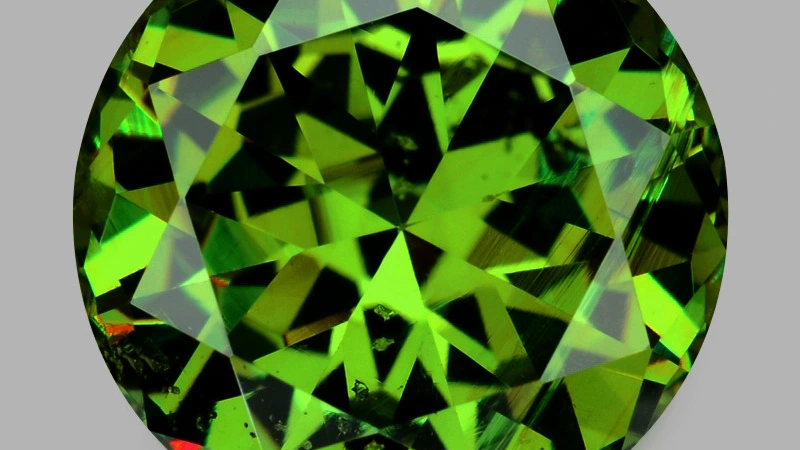
3. Significant Rarity: Demantoid garnet is considerably rare, especially in large sizes (typically above 2 carats) combined with high quality (i.e., fine color and good clarity). Finding examples that possess top color, good transparency, and substantial size simultaneously is challenging. This inherent scarcity, particularly for clean stones with superior emerald-green color from the classic Russian source, significantly contributes to its market value and collector status.
4. Appeal of the Specific Color Spectrum: While all demantoids possess value, nuances in their color greatly influence desirability and price:
- Deep Emerald Green: This hue, indicating an optimal concentration of chromium as the chromophore, is considered the most desirable, rare, and valuable color for demantoid. Often found in the finest Russian examples, it is highly sought after for its resemblance to emerald but with far superior brilliance and fire.
- Light Green to Yellowish-Green: These stones, which may have a stronger iron influence on their color or originate from non-Russian sources (like Namibia, Madagascar), are generally more available and accessibly priced. They offer a fresh, bright appearance and still beautifully showcase the characteristic sparkle and fire of demantoid.
- Green with Brownish or Olive Undertones: Some specimens, particularly from certain African deposits, may exhibit brownish or olive secondary hues. While not typically valued as highly as the pure greens, they represent part of the gem’s natural diversity and can be utilized effectively in unique jewelry designs.
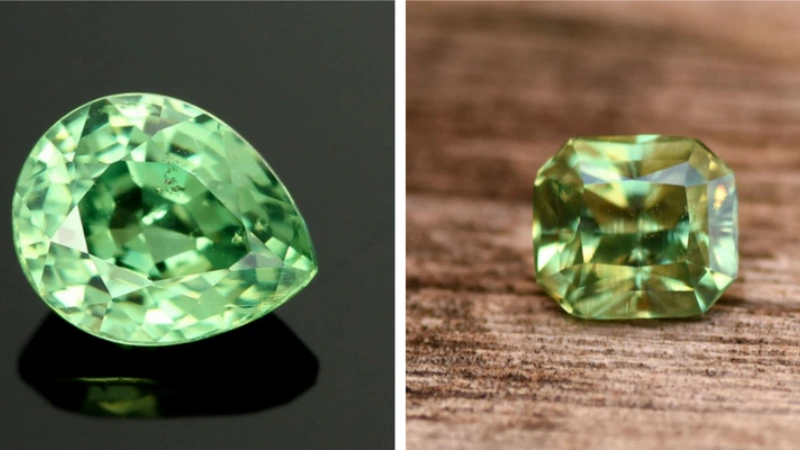
Applications of Demantoid Garnet
Demantoid garnet, with its high refractive index typically ranging from 1.88 to 1.89 and an exceptional dispersion of 0.057, which even exceeds that of diamond, has secured a distinguished place as a fine gemstone in the realm of jewelry.
Its relatively good hardness, falling between 6.5 and 7.5 on the Mohs scale, allows for its application in diverse jewelry forms. However, its inherent rarity and considerable value often dictate its incorporation into specialized and carefully considered designs.
Specifically, demantoid garnets are favored in statement rings where particular cuts, such as the brilliant and various fancy shapes, are employed to maximize the stone’s inherent brilliance. Furthermore, they are utilized as prominent centerpieces in pendants and necklaces, especially those specimens exhibiting a rich emerald-green hue, which are particularly prized.
Finally, owing to their limited availability, especially high-caliber stones of notable carat weight, demantoid garnets are increasingly recognized as significant collector’s items and viable investment opportunities, with factors like authenticity, color, clarity, and provenance, notably from historical Russian mines, playing crucial roles in determining their value.
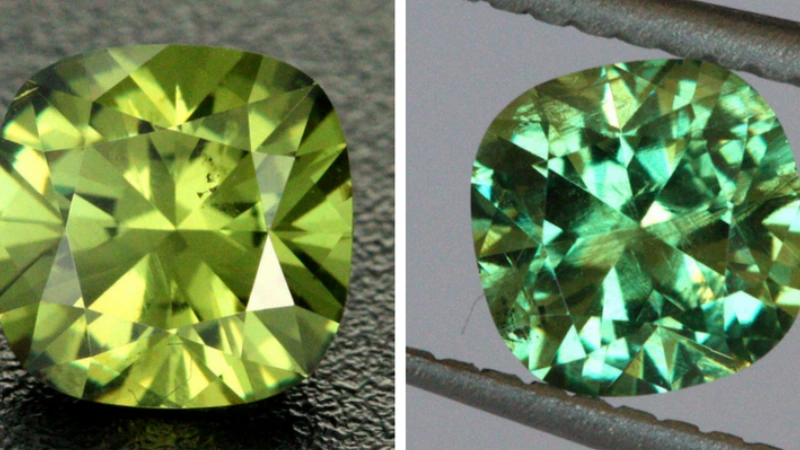
Valuation of Demantoid Garnet
The valuation of demantoid garnet is nuanced, influenced by a confluence of key characteristics. Foremost among these is color, where specimens exhibiting vivid, saturated green hues, particularly those with a strong emerald-like intensity, command the highest prices in the market.
Clarity also plays a significant role; while gemstones with minimal internal inclusions are generally favored, demantoid garnets are a notable exception due to the presence of distinctive horsetail inclusions.
These radiating, golden-fibrous inclusions, a unique characteristic often associated with Russian origins, can significantly enhance a stone’s value and desirability among collectors, provided they are aesthetically pleasing and not overly disruptive to the gem’s overall transparency.
Size is another critical determinant of price, as demantoid garnets typically occur in small sizes. Larger stones, exceeding one carat, are exceptionally scarce and thus fetch substantial premiums, with prices escalating exponentially for multi-carat gems of high quality. Finally, origin significantly impacts value.
Demantoids originating from historical Russian deposits, particularly those containing prominent horsetail inclusions, often possess historical significance and a heightened market value due to their rarity and provenance.
Consequently, the price range for high-quality demantoid garnets can vary considerably, spanning from approximately $1,000 to upwards of $15,000 per carat, and in some exceptional cases, even more, contingent upon the precise interplay of these aforementioned factors.
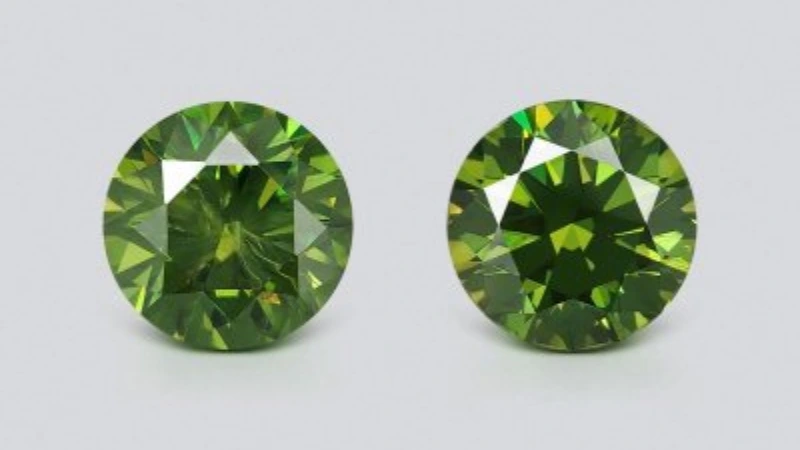
Caring for Demantoid Garnet
While relatively durable, demantoid garnets should be handled with care to preserve their beauty:
• Avoid Impact: The gemstone is sensitive to physical shocks.
• Regular Cleaning: Use warm, soapy water and a soft cloth or brush. Avoid ultrasonic cleaners.
• Proper Storage: Keep your demantoid jewelry in separate compartments to prevent scratches.
Conclusion
Demantoid garnet is not just a gemstone; it is a piece of nature’s art. From its breathtaking brilliance to its rich history and rarity, it continues to captivate gemologists, collectors, and jewelry enthusiasts worldwide.
At Brkogems , we are committed to offering only the finest demantoid garnets, ensuring quality and authenticity. Explore our collection to experience the allure of this extraordinary gemstone for yourself.
